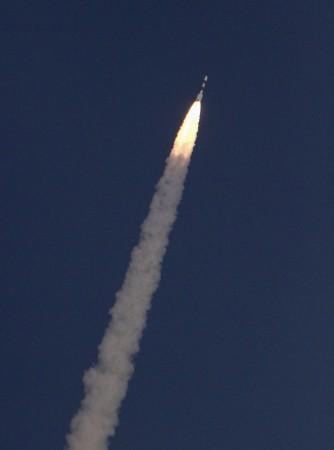
The Indian Space Research Organisation (ISRO) on Tuesday reverted to the tried and tested technology used in the previous orbit raising manoeuvres to overcome the snag in the fourth manoeuvre.
According to a statement from ISRO, scientists had used a mechanism where both primary and redundant coils were energised together. This stopped the flow of fuel to the Liquid Engine used to fire the spacecraft. The scientists then opted for attitude control thrusters to continue the operation. This entire exercise resulted in reduction of the velocity of the spacecraft.
The scientists at Telemetry, Tracking and Command Network (ISTRAC) in Bangalore could raise the Orbiter by a few thousand kilometres on Monday. In the fourth orbit-raising operation conducted on November 11, the apogee of Mars Orbiter Spacecraft was raised from 71,623 km to 78,276 km by imparting an incremental velocity of 35 metres/second. The planned velocity was 130 metres/second to raise apogee to about 1,00,000 kms.
On Tuesday the scientists used only the primary coil to energise the Liquid Engine, which fired for over 5 minutes and successfully lifted the Orbiter to one lakh kilometres. The same mechanism was used to raise the first three orbits of the spacecraft.
ISRO then successfully raised the orbit of the Orbiter to Mars at 05:03 am from 40,366 kilometres at apogee (farthest point from Earth) to 1,18,642 kms, according to release by the space research organisation. The 440 Newton Liquid Engine was fired for 303.8 (5.06 minutes) to achieve this apogee. This manoeuvre is being termed as supplementary raising to the fourth orbit raising exercise.
ISRO plans to continue with older mechanism opted for the first three orbit raising manoeuvres for the remaining ones. “While this parallel mode of operating the two coils is not possible for subsequent operations, they could be operated independently in sequence,” the statement from ISRO added.
For the earlier three orbit raising manoeuvres, ISRO scientists used the primary coil of the solenoid flow control valve to raise the orbit of the spacecraft. Four more orbit raising exercises will set the Orbiter to Mars on the Mars Transfer Trajectory.
ISRO’s maiden Mars mission was successfully launched by the Polar Satellite Launch Vehicle- C25 (PSLV) on November 5 from Sriharikota. If the Orbiter successfully enters the Martian orbit, the five scientific instruments on board will be activated to initiate studies on morphology, mineralogy and atmosphere of the Martian surface.
The ₹450 Crore mission is a technology demonstrator that will help ISRO develop technologies required for designing, planning, management and operations of an interplanetary mission.










